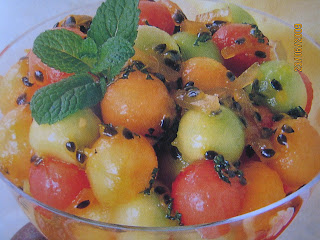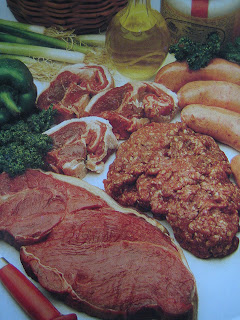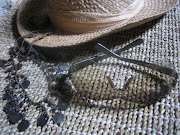When I was a little child, i once had a dream so vivid that i still remember to this day. A little old man was selling his sweet desserts in a small wooden box, (maybe approximately 3' wide x 1' deep x 1.5' high) that had been attached to the back of his old beaten down black framed bicycle (which might have been a tricycle. Whoever said dreams had to be logical?)
I even remember the colour of the wooden box, which was painted in uneven brushes and sweeps of azure deep blue. The tyres were worn and old just like the shirt and straw hat that he had on but that he had one of the most unforgettable, inviting and sincerest smile that could only have come from his heart. The same kind of smile that i have seen in mom, Ben, my children and all the people i have ever loved.

He had me drooling with my jaws gaping wide as he slid open the little wooden panel exposing the most magical and enchanting looking desserts that i had ever seen. As i did not have any money on me, he looked at me deeply, kindly and still wearing the same smile said that it was to be his treat and that i could choose one of anything i like from the grand array of display. Just one?
I never did make my pick. Now that i am a grown woman, I am quite certain that i still would not have been able to finalise on the pick if i had met the little old man again.
Which would yours have been, i wonder?

Pulut Tatal
Alluringly gorgeous in presentation and rank high in the taste and flavor department, it’s undeniably one of the most inventive and vividly luscious Nyonya creations.
The two-step process starts with the making of the cases or “top hats” with a metal mold, follow by the cooking of julienned jicama, carrot, and chopped shrimp. These ingredients are then assembled to form these eye candy treats.
These munchies makes a killer hor’deurves in any parties, be it a Malaysian or Singaporean party or an all-American schmooze fest.




Kuih Talam


These are commonly known as "kuih" and the assortments of the multi coloured and sweet flavoured snack items in the Malay Archipelago. They are easily available and are usually a tea time favourite for both the young and old.
They are in delightfully delectable bite sized pieces that is usually accompanied with a mug of "Tea Tarik" or "Pulled Tea". It is tea with condensed milk and best when it is frothy, airy and bubbly from the process of 'pulling'. Or one can also opt for the local black coffee, with or without milk.
In almost all kuihs, the most common flavouring ingredients are grated coconut (plain or flavoured), coconut cream (thick or thin), pandan (screwpines) leaves and gula melaka (palm sugar, fresh or aged). Their base and texture are built on a group of starches namely rice flour, glutinous rice flour, glutinous rice and tapioca. Two other common ingredients are tapioca flour and green bean (mung bean) flour (sometimes called "green pea flour" in certain recipes). They play a most important part in giving kuihs their distinctive soft, almost pudding-like, yet firm texture.
For most kuihs there is no single "original" or "authentic" recipe. Traditionally, making kuih was the domain of elderly grandmothers, aunts and other women-folk, for whom the only (and best) method for cooking was often replied to be in "agak agak" (approximation).
They would instinctively take handfuls of ingredients and mix them without any measurements or any need of weighing scales. All is judged by its look and feel, the consistency of the batter and how it feels to the touch.
Each family holds its own traditional recipe as well as each region and state. Though each may be called by other names, one is likely to find various similar versions of kuih in neighbouring countries, such as Vietnam, Thailand, Myanmar, and Indonesia.
Have a great week ahead all ! Be sweet, be safe.. as always. :)
fl

















































































